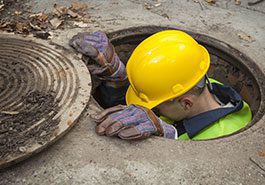OSHA has recently instituted a new regulation concerning confined spaces in the construction industry, which will come into effect on August 3, 2015.
Understanding the Implications of the New Standard Across Construction Sectors
While the regulation seems to primarily target the construction industry, it extends its reach to facility owners, property managers, general contractors, and construction managers. Each of these stakeholders must familiarize themselves with their distinct compliance obligations under the new law.
Examining the Salient Features of the New Confined Space Entry Standard
Inspired by the general industry confined space entry standard introduced in 1993, this fresh standard presents key provisions such as:
- Recognizing and notifying about all confined spaces at job sites
- Framing a comprehensive written confined space entry program
- Categorizing the confined space
- Establishing specific protocols for confined space entry
- Coordinating with the controlling employer and host employer
- Formulating and implementing a confined space permit and permit system
- Rescue and emergency services
- Adequate training for personnel
Addressing the Hazards Associated with Confined Spaces
Tragically, confined spaces often become death traps for workers due to their uninhabitable conditions. To avoid such fatalities, contractors required to operate in potentially hazardous confined spaces must:
- Assign competent personnel to identify potentially dangerous confined spaces
- Facilitate training for all team members engaged in confined space entry operations
- Procure necessary equipment to ensure safety during confined space operations
Deciphering the Complexities of the Construction Confined Space Entry Standard
The construction confined space entry standard, akin to the standard drafted for manufacturing and industry years ago, can be intricate. Hence, contractors and others impacted by this new standard are advised to join informational workshops to understand their compliance responsibilities fully.
Preventing Fatal Accidents in Confined Spaces
Fatal accidents in confined spaces can be averted if contractors take adequate measures to recognize, control, and prohibit unauthorized entry into potentially dangerous confined spaces. An incident involving two elevator mechanics, who sustained severe burns while welding in an elevator pit, underscores the importance of hazard awareness.
Emphasizing the Role of Facility Owners and Managers in Hazard Communication
The new standard also emphasizes the significant role of facility owners and managers in conveying the risks associated with potentially dangerous confined spaces in the facilities they oversee.
Horton is organizing an informational workshop on this topic in the fall. All affected parties, including trade contractors, general contractors, facility owners, and managers, are encouraged to participate. Given the severity of the consequences of non-compliance, it’s crucial to understand the new standard before an OSHA inspection or, worse, an accident occurs.
Need Assistance? Reach out to Horton Safety Consultants
The interpretation of the standard can be quite complex. If you have any queries concerning the new rule, please feel free to contact Horton Safety Consultants at 708-845-3662.
Material posted on this website is for informational purposes only and does not constitute a legal opinion or medical advice. Contact your legal representative or medical professional for information specific to your legal or medical needs.



